Menu
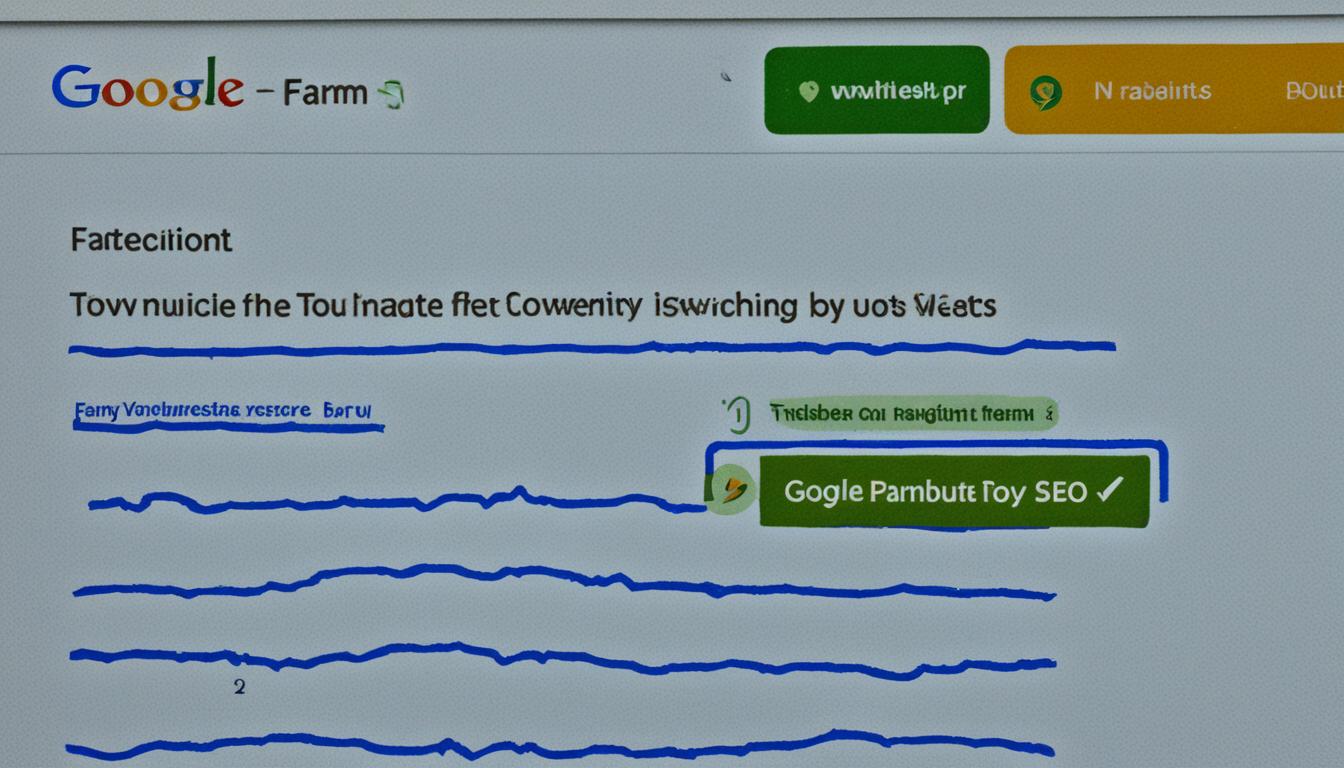
Did you know, 93% of online journeys start with a search engine? This fact shows SEO’s vital role in the digital world. To help farms stand out and sell more, knowing and using strong SEO tactics is key. A good SEO plan can change how a farm looks online, bringing in more leads and sales.
SEO is key for making farms more visible on search engines, connecting them with local customers. Since 93% of online adventures start with a search, good SEO is really important for any farm.
For your farm to show up well online, you need a smart SEO plan. Doing good SEO, including local techniques like geofencing, can attract customers near you.
Getting into the top 3 of local searches on Google is vital for grabbing local interest. This spot shows three different businesses and helps farms get noticed more online.
Creating great content is a huge part of SEO success. Good content keeps people on your page longer, showing Google your site is worth seeing. Using the right keywords helps too, bringing more targeted visitors to your farm.
The best part? A good SEO strategy keeps helping your farm for a long time. Details like title tags, meta descriptions, and making your site user-friendly, all improve your site’s search results.
It’s also important to have a mobile-friendly website. More and more people are visiting sites on their phones. And don’t forget about voice search. Making your site ready for voice searches can help it be found easier.
| SEO Strategy | Benefits |
|---|---|
| Local SEO | Drives local traffic through geofencing and Google 3-pack listings |
| High-Quality Content | Increases dwell time and relevance signals to Google |
| Long-Tail Keywords | Attracts specific, high-intent traffic |
| Mobile Optimisation | Caters to smartphone users for improved accessibility |
| Voice Search Optimisation | Enhances visibility for users utilising voice assistants |
| Title and Meta Tag Optimisation | Improves click-through rates and search engine rankings |
SEO boosts rural online marketing and growth over time. With the right approach, farms can stay ahead online. This leads to more customer interest and better returns.
Keyword research is key for a successful farm content plan. It helps farms create content that matches what people look for online. This boosts the website’s rank on search engines and brings more visitors who are interested in what the farm offers.
It’s important to know the difference between short-tail and long-tail keywords. Short-tail keywords are general and face a lot of competition. They match broad search topics but may not bring highly targeted visitors. For example, ‘backyard chicken breeds’ is searched a lot but has less competition.In contrast, ‘best backyard chicken breeds’ is more specific. It has more competition but also more search requests.
Long-tail keywords are narrower and face less competition. This means it’s easier to rank higher in search results with them. They also match what people are specifically looking for.This can lead to more engaged visitors and more conversions on the website.
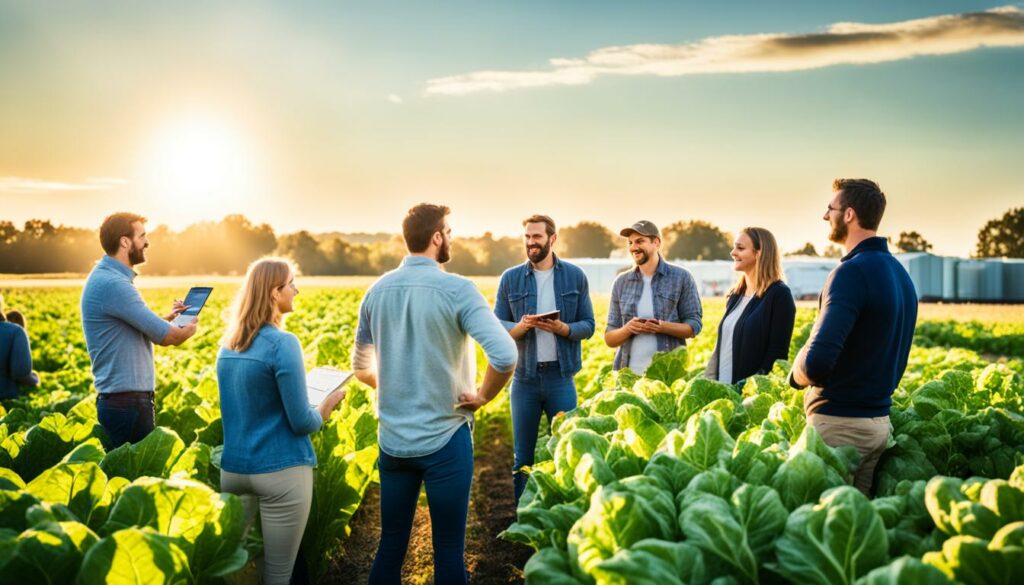
There are tools that make keyword research easier and more effective. Google’s Keyword Planner, for instance, offers insights on keywords. It shows monthly search volumes, competition, and how difficult keywords are.Ahrefs and SEMrush give details about competitors and monitor keyword performance over time.
| Tool | Features | Benefits |
|---|---|---|
| Google Keyword Planner | Monthly search volume, competition level, keyword suggestions | Identifies impactful keywords, aids in strategic planning |
| Ahrefs | Competitor analysis, keyword rankings | Monitors competitor performance, offers backlink insights |
| SEMrush | Keyword tracking, SEO audit | Comprehensive SEO insights, optimises content strategy |
Using the right keywords is vital for SEO. This means naturally putting these keywords into your website. This could include blog posts, product descriptions, and meta tags. By focusing on keywords related to farming, the site can attract a specific and interested audience. This can reduce bounce rates and keep users on the webpage longer.
Focusing on keyword-driven content can boost a farm’s presence online. It shows the farm as knowledgeable in its area. Good keyword research and use can help farms stand out online.
Improving user experience is key for higher SEO rankings. A website that’s easy to use helps keep people interested. This means more visitors stay and look around the site. It’s important for farms to have a user-friendly website design. This way, they boost their online presence and draw more customers.
Good website navigation is like a road map for visitors. It helps them find what they’re looking for without getting lost. This makes their visit more enjoyable and keeps them on the site longer. Simple menus and a clear layout can greatly improve how well a farm’s website does. It makes promotion more effective.
Visual content is vital for holding people’s interest. Adding top-notch pictures, charts, and videos to a farm website makes it more attractive. It also helps people remember what they’ve seen. For instance, showing photos of eco-friendly farming helps appeal to green consumers.
It’s important to meet users’ needs on a website. Making sure the content matches what they’re searching for helps them a lot. It’s about answering their questions and offering helpful information. Doing this can boost not just how happy users are but also the site’s popularity on search engines.
“A seamless user experience encourages longer site visits, increasing brand familiarity and the likelihood of user conversion.”
To wrap up, making the user experience better is vital for any farm website. This involves clear navigation, catching visual content, and understanding what users want. These steps not only make visitors happier but also improve the site’s position in search results.
Good title tags and meta descriptions are key to better SEO and more clicks for farm websites. Since almost all online experiences rely on search engines, catching users’ attention at first glance is vital.
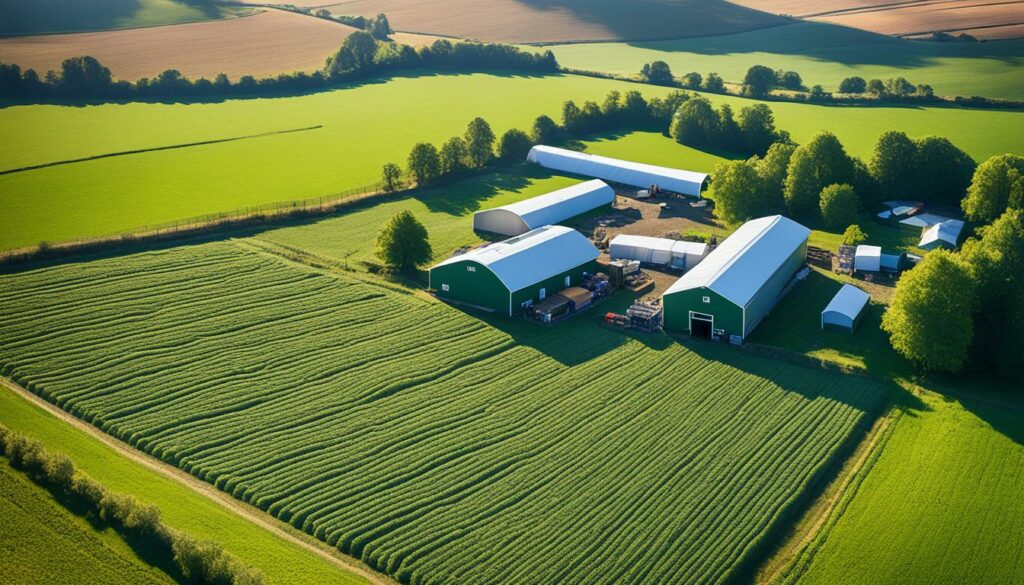
Your farm’s title tags are like the website’s first hello in search results. These tags should be short and interesting, and include specific keywords like targeted title tags. Aim for a tag that’s not over 70 characters for quick understanding.
Each page’s title tag needs to be special and show what’s inside, bringing in visitors and following SEO rules.
Meta descriptions give a snapshot of what a page is about, backing up the title tag. They should be so good that users want to click through. Using well-written descriptions can boost how often people visit your site. A good one does more than tell, it sells, like a tiny ad for your site.
| Aspect | Best Practice |
|---|---|
| Title Tag Length | Up to 70 characters |
| Meta Description Length | 150-160 characters |
| Keywords | Included naturally |
| Uniqueness | Each page should have a unique title and description |
| Calls to Action | Encouraged for higher engagement |
By using these strategies in your SEO work, your farm’s website can draw in more visitors, grow in visibility, and perform better online.
Creating farm content that’s engaging is vital for growing your digital presence. It’s about reaching a wider audience online. You can do this by offering various types of content. This approach ensures more people find something they like on your website.
Use different types of content to grab various audience members’ attention. Blogs share detailed farm updates. Infographics make complex info easy to understand. Videos bring the farm to life, showing the day-to-day and special events. Mixing these types keeps your audience interested and your site more vibrant.
Although search engine optimisation is key, focus on your audience’s readability and engagement first. Compelling stories and valuable info hold people’s interest. This approach not only builds trust but also boosts your content’s search engine ranking.
Use keywords that people often search for when creating your content. But, make sure they fit naturally in your text. Google’s Keyword Planner can show you which terms to use. Balancing short and long keywords helps attract many visitors. This strategy can boost your site’s visibility and attract more organic traffic over time.
Boosting your farm’s online presence locally is key. Local SEO helps your farm connect with customers in the area. It makes your community stronger and boosts local visits.
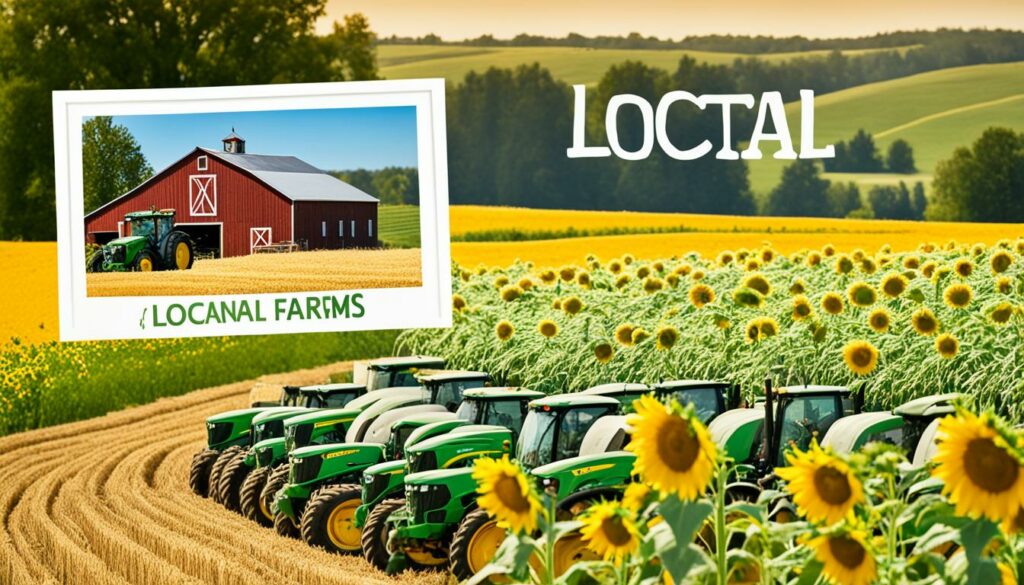
First, make sure you claim and optimise your farm’s Google Business Profile. It’s a vital step because it visibly marks your farm on the local map. A good Google Profile means local customers find your farm easily. They get to see where you are, your hours, and how to contact you.
Geofencing is a great local SEO technique. It allows you to reach out to anyone near your farm. You can send them offers or updates straight to their phones. Using geofencing with your Google Profile makes sure you reach as many locals as possible.
Improving on-page SEO is vital for your farm’s website. It covers making your site more logical and quick to load. These changes lower bounce rates and enhance the user experience. So, tweaking your *on-page SEO for farms* can really boost how well your site does.
A good site structure is key. It means organising information logically, making it simple for visitors to find what they need. Use clear main categories and link related subcategories. Adding sitemaps and links between pages helps both people and search engines understand your site better.
Every second counts in today’s online world. People expect quick page loads, especially on their mobiles. A *quick-loading farm website* is vital for keeping visitors. Slow sites see more people leaving early, which hurts your ranking on search engines. To speed up your site, shrink image sizes, cache browsers, and reduce CSS and JavaScript files.
| SEO Aspect | Importance | Optimisation Tips |
|---|---|---|
| Website Structure | High | Use clear categories, include internal links, and add sitemaps. |
| Page Loading Speed | Critical | Compress images, enable browser caching, and minimise CSS/JS files. |
| Mobile-Friendliness | Essential | Ensure responsive design and fast loading times for mobile users. |
Use these *on-page SEO for farms* pointers to create a site that’s friendly and high in search rankings. A clear, fast site pleases visitors and search engines alike, drawing more people to your online farm.
Today, having a responsive farm website design is essential. More than half of all visits to agriculture sites come from search engines. This shows how important good SEO is. Also, over half of all internet browsing happens on mobiles. This makes it key to have a site that works well on phones.
Bluestem Media knows this and makes sites just for farms and agribusinesses. They make sites that look good and work well on mobiles. When sites are easy to use and read on a phone, people stay longer and like the site more. This is what Google looks for too.
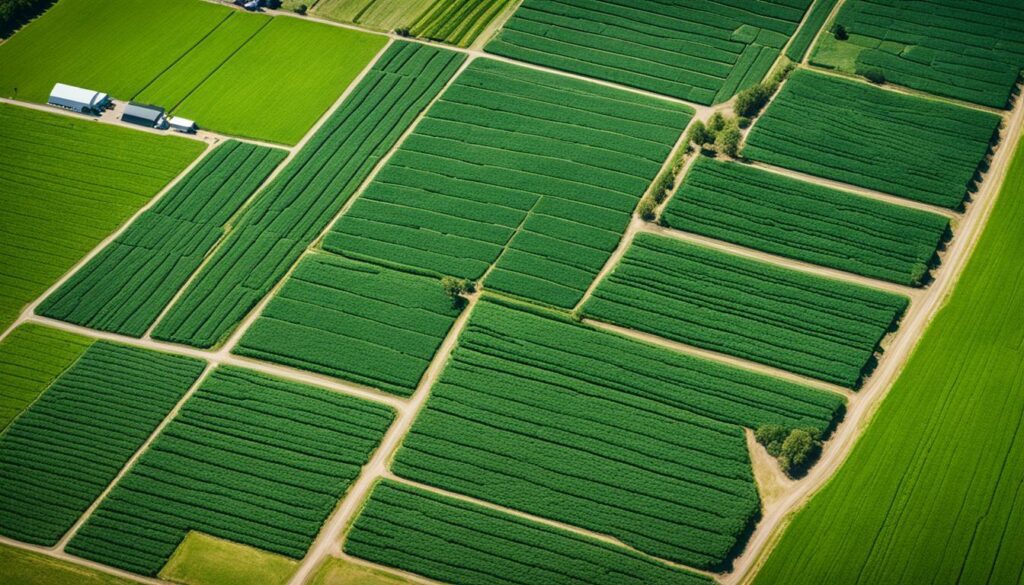
If a site isn’t easy to use on a phone, it can lose business. Google says more than half of users won’t recommend a poorly mobile site. And nearly half think the business doesn’t care. So, a well-designed mobile site is crucial for a good impression and to rank high on Google.
In Australia, where most people have smartphones, mobile searches are big. So, farms that focus on mobile users increase their chance of winning people over. They can see up to 160% more customer interest if their site is easy to use on a phone.
Bluestem Media says keeping ahead in agribusiness means always improving websites, especially for mobiles.
Keeping a mobile site up and running well is equally important. This includes the technical side like hosting and regular upkeep. It all helps to make the site user-friendly and visible on search engines.
| Factors | Impact on Mobile Optimisation |
|---|---|
| Mobile-First Indexing | Prioritises mobile version in search results |
| Navigation Ease | Improves user readability and engagement |
| Loading Speed | Reduces bounce rates significantly |
| Visual Appeal | Enhances user experience and connotes professionalism |
Many people now use voice search, so it’s very important for farm websites to adapt. This technology changes how we use search engines. Now, websites need to speak in a more natural way to match how people ask questions.
With over 3.25 billion using voice search, farm websites need to keep up. They should make their content sound like how people really talk. This means focusing on long-tail keywords over short and static ones.
Using long-tail keywords is key for voice search optimisation. These are longer and more detailed. Since voice search mimics actual speech, using these keywords will help farm websites rank better in results.
Over 50% of people search by voice, and this is only increasing. For example, by 2023, this figure is expected to hit 70%. So, adapting to voice search is more important than ever.
Voice search has helped big brands in many ways. For example, Domino’s Pizza saw a 20% sales boost with voice orders. The Home Depot also got 22% more people in its stores thanks to voice search. This shows how beneficial it can be for farms too.
See below for how voice search has helped various brands:
| Brand | Impact |
|---|---|
| Domino’s Pizza | 20% rise in sales |
| Sephora | 30% increase in online traffic |
| The Home Depot | 22% increase in store visits |
| BBC | 400% increase in content consumption |
| Ask Me Anything (AMA) | 25% increase in organic traffic |
To boost their online presence, farms need a diverse SEO approach. This mix of strategies aims to lift their search engine rankings. With 93% of all online experiences starting at search engines, focusing on the right SEO for farms is key.
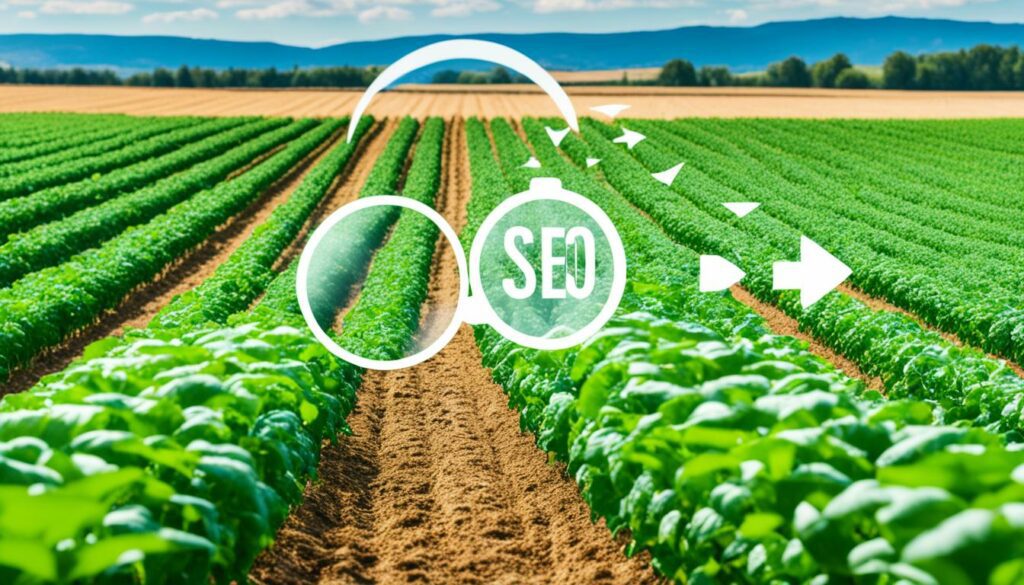
First, emphasise local SEO. Geofencing in a small area attracts local visitors easily. It’s also vital to claim your Google Business Profile and put your farm in local directories. These steps will boost how easily locals find you online.
Voice search is becoming more important due to devices like smart speakers. Use long-tail keywords to answer questions in a friendly, natural way. This can help your farm show up more often in voice search results.
Content marketing is also critical. Regularly updating your site with keyword-rich content can help a lot. Don’t just stick to written posts. Try adding videos, infographics, and more to keep all visitors interested.
Make sure your website looks good on mobile as 94% of US residents use mobile devices to access the internet. A design that looks great on any device is essential for a good user experience.
Link building and content marketing should go hand in hand. Getting links from high-quality sites can boost your credibility and rankings. WebFX is a good example of how these strategies can lead to success.
Keep track of these steps’ success with tools like Google Analytics and MOZ. They offer you data you need to fine-tune your SEO strategy over time. With more than 500 experts working on your SEO, it may take a while to see big changes. But, the lasting impact of good SEO is worth the wait.
| Key Strategy | Details |
|---|---|
| Local SEO | Geofencing within a 4-5 mile radius, Google Business Profile, local directories |
| Voice Search Optimisation | Utilise long-tail keywords, conversational content |
| Content Marketing | Diverse formats: blogs, infographics, videos; keyword-driven content |
| Mobile-Friendly Design | Ensure responsive design for optimal viewing across devices |
| Link Building | Acquiring quality backlinks from reputable sources |
Getting authoritative backlinks is key to making farm websites more visible online. These links come from well-known sources. They make a farm’s site more trustworthy and help it rank higher on search engines. We’ll look at some smart tips for getting good backlinks in farming.
It’s vital to use specific keywords for your industry when building links. Keywords like “organic fertilisers” and “sustainable agriculture techniques” are vital. They make sure farms attract the right people online. For example, a beef farm saw 20% more visitors after local news covered them. Also, mentions on farming blogs increased sales for equipment makers by 15%.
Keeping an eye on certain measures is crucial. Things like how many websites link to yours, the total links, and the strength of those sites matter. Goals include more people finding your site, higher keyword ranks, and better leads. Tools like Google Search Console and SEMRush help watch these goals.
Let’s check out how different types of backlinks affect a site:
| Type of Backlink | Example Source | Impact on Domain Authority | Impact on Traffic |
|---|---|---|---|
| Local News | Local News Sites | 20% | 30% |
| Product Mentions | Agricultural Blogs | 15% | 25% |
| Expert Articles | Industry-specific Journals | 25% | 35% |
New trends in farming SEO mean new linking strategies. Staying current means trying voice search and other tech. You could try live streams or using drones for cool content.
Thinking green is big in farming. Efforts like eco-tools and fair trade get noticed. They earn good links from others who care about the Earth. Doing this right boosts your reputation and gets you more effective links.
To sum up, link building for farms is all about knowing your field, working with the right partners, and keeping up with SEO. With the right focus, farm sites can improve a lot. They’ll be more seen, more valued, and do better online.
It’s key to create farm content that people value and share. This helps your farm grow and connect better with your audience. Content that really speaks to your viewers can spread far.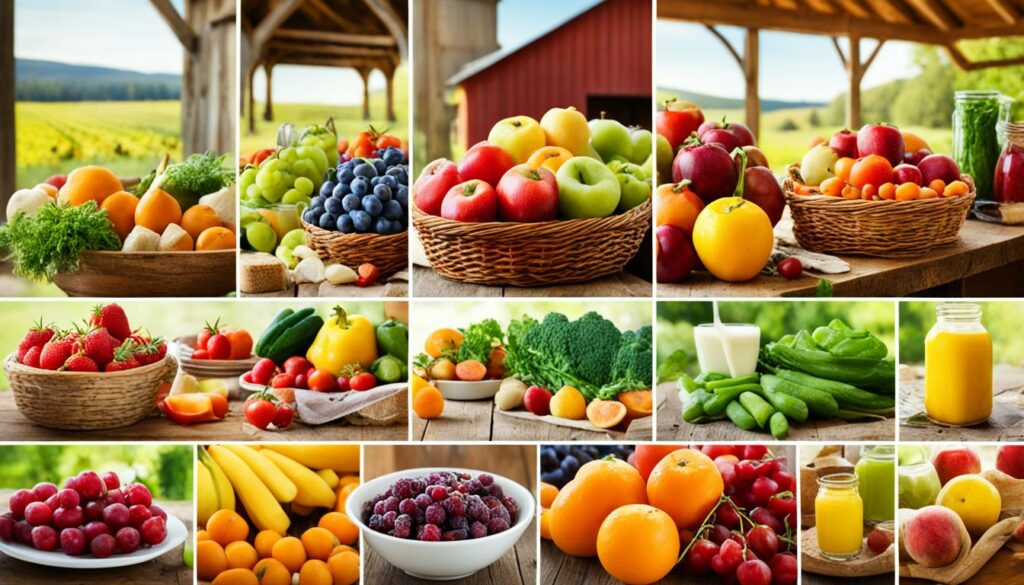
Knowing your audience well is very important. It lets you make content that fits what they like. You can use surveys and social media tools to learn about them. Then, make content that meets their interests directly.
To know if your content is working, look at how much people engage with it. Encourage them to comment and join discussions. Include fun things like polls and quizzes. Photos and videos can also help a lot.
Adding certain keywords can draw more specific visitors, boosting engagement. Keeping your website’s navigation simple with just a few main tabs can improve a visitor’s experience. Your goal should be to create a community around your farm. This makes users come back and support you more.
Applying these strategies keeps your community engaged. It helps your farm’s digital footprint and grows a devoted group around it.
Social media has changed how farms and customers connect. Sites like Facebook, Instagram, and Twitter are key. They let farms boost their online presence through SEO. This leads to stronger connections and more loyal customers by talking directly to followers.
Social media plays a big part in promoting farms. It helps bring people to the farm’s website. By posting links on social media, you make it easier for customers to find you. This also improves your site’s rank in search engines. Including social media in your SEO plan is smart. It helps your website do better by showing search engines your content is worth seeing.
Another plus of social media is sharing great content easily. Blog posts, infographics, and videos can reach a wider audience when posted. These materials can teach customers about farm work. Tools like polls can also get you feedback, which is useful for improving your marketing. Answering customer questions quickly online builds trust.
| Platform | Active Users | Engagement Benefits | SEO Support |
|---|---|---|---|
| 1.5 billion monthly | Brand awareness, customer feedback | High social signals, link sharing | |
| 500 million daily | Visual content sharing, customer engagement | Image-based SEO, link in bio | |
| 126 million daily | Real-time updates, customer interaction | Social signals, link sharing |
Using social media in SEO strengthens your online voice. It boosts your farm’s visibility and draws people in. Also, it shows you care about talking with your audience. Directly engaging with them on social sites builds trust in your brand. It’s a key part of a successful digital marketing strategy.
It’s key to check how well your SEO work is doing for your farm. By looking at the results often, you spot what’s working and what needs a tweak. Google Analytics is a great tool for this job.
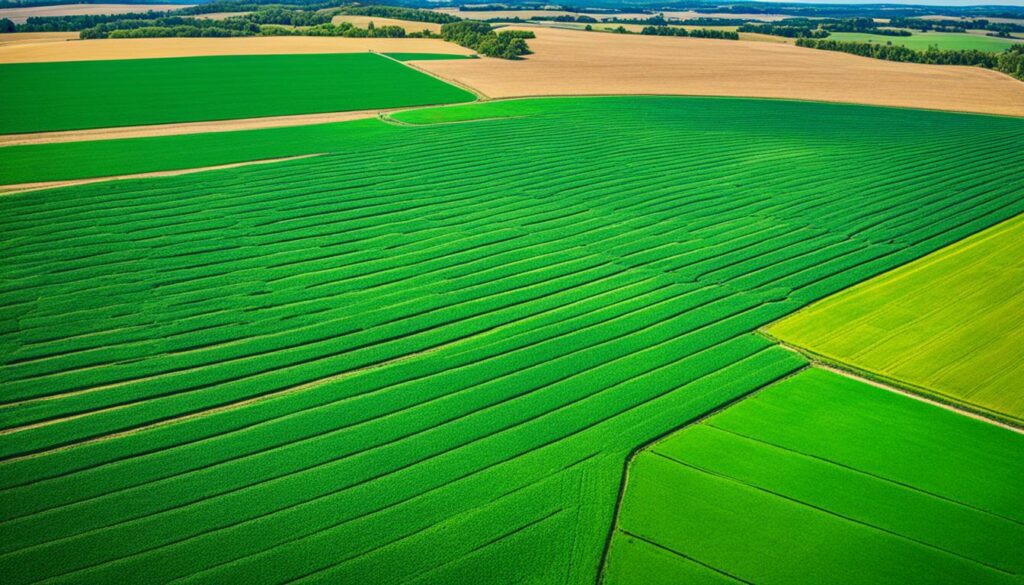
There are many tools to see how well your farm’s SEO is doing. Google Analytics shows info on the people coming to your site, how many leave quickly, and what they do there. Moz and Ahrefs look at things like your site’s trustworthiness and links, which shows its credibility and popularity.
| Metric | Description |
|---|---|
| Organic Traffic | Reflects the number of visitors arriving via search engines, highlighting the impact of your SEO. |
| Keyword Rankings | Shows where your farm’s website stands in SERPs for targeted keywords, indicating content performance. |
| Click-Through Rate (CTR) | A higher CTR suggests your page titles and meta descriptions are compelling and relevant to search queries. |
| Goals/Conversions | Measures the effectiveness of converting visitors into customers, whether through purchases, forms, or newsletter sign-ups. |
| Backlinks | Quality backlinks drive traffic and enhance your website’s authority in search engines. |
| Website Authority | Tools like Moz’s DA or Ahrefs’ DR provide insights into your farm’s website strength in search engines. |
If you want to do well in SEO, start by setting clear, achievable goals. Base your goals and targets on what you find from your data. For example, aim to boost how well you show up in searches for certain products or increase your visitors by a goal percentage in six months. This way, you can see exactly how successful your SEO work is and what needs more work.
SEO can really change your farm’s success and how people find you online. By using this data well, you can develop a strong online presence and connect with more customers and markets.
In our digital world, starting a search on the internet is how most of us find things. This is why SEO is so crucial. By optimising farm websites for search engines, they can be found more easily. This leads to more visits online and, hopefully, more business. A website that is well set up stands a better chance of growing and making more profit in farming.
Choosing the right words is key in SEO. Using long-tail keywords makes farm websites clearer to search engines and people. By putting important words first in title tags, more visitors are likely to come and stay. Your website design and what’s on it matter too. Good images, easy-to-use menus, and interesting articles help your site to rank better and keep visitors engaged.
For farms, being found locally is very important. Creating a Google Business Profile and targeting local customers can draw more people to the farm. Good SEO practices are a must. This means sticking to the rules and not using sneaky methods that could get you in trouble online.
Never stop making your website better for search engines. Things like how fast your pages load and the site’s structure matter a lot. Also, making your site work well on phones and for voice searches is becoming more important. By always working to improve, farms will get more visitors from searches. This can help them grow steadily in the tough online world.
SEO helps farm websites appear more in searches, pulling in visitors and maybe more sales. With most online journeys starting with a search, good SEO really boosts a farm’s online reach.
Looking up keywords makes sure your farm’s content fits what people are searching for. By using the right keywords, you attract the right people and increase how often you show up in searches.
Good user experience keeps people interested longer and more likely to do business with you. It’s key in climbing up search rankings and making people remember your brand.
Title tags and meta descriptions grab people’s attention, encouraging them to click your link. By making these short and informative, more people will click, improving your search rank.
Create a mix of content like blogs, infographics, and videos to appeal to a wide audience. The aim is to engage your readers while meeting search engine rules with strategic keywords.
Local SEO makes it easier for people nearby to find and visit your farm. It involves updating your Google Business Profile and using geofencing for better local search results.
Organise your website well, ensure fast page loading, and simplify navigation. Plus, using correctly optimised media helps with SEO, too.
A farm website must look good and work well on mobiles because many people surf the internet using them. It’s important for engaging users and ranking well in searches.
Tweak your content to be more like a conversation and use long-tail keywords. This makes finding your farm easier for people using voice searches.
Good backlinks prove your website’s trustworthiness and can help improve your search rank. They tell search engines that your site knows its stuff.
Know what your audience likes and create stories that connect with them. This helps build a community around your brand through sharing and interaction.
Social media brings people to your website and lets you share useful content. Being active on these platforms increases your visibility and helps with SEO signals.
Google Analytics is great for keeping an eye on your SEO results. Setting clear goals and regularly checking on your progress can guide your future strategies.